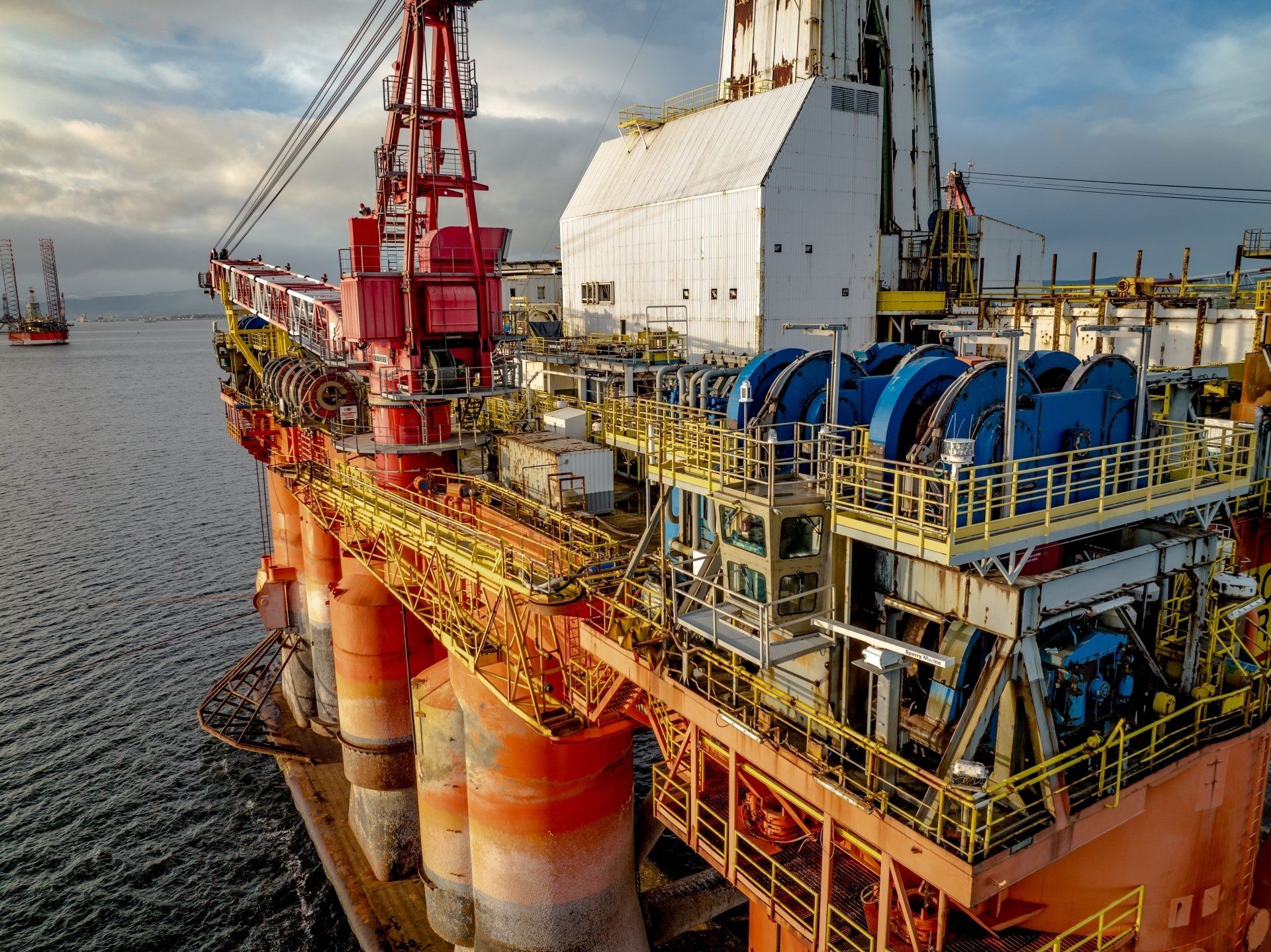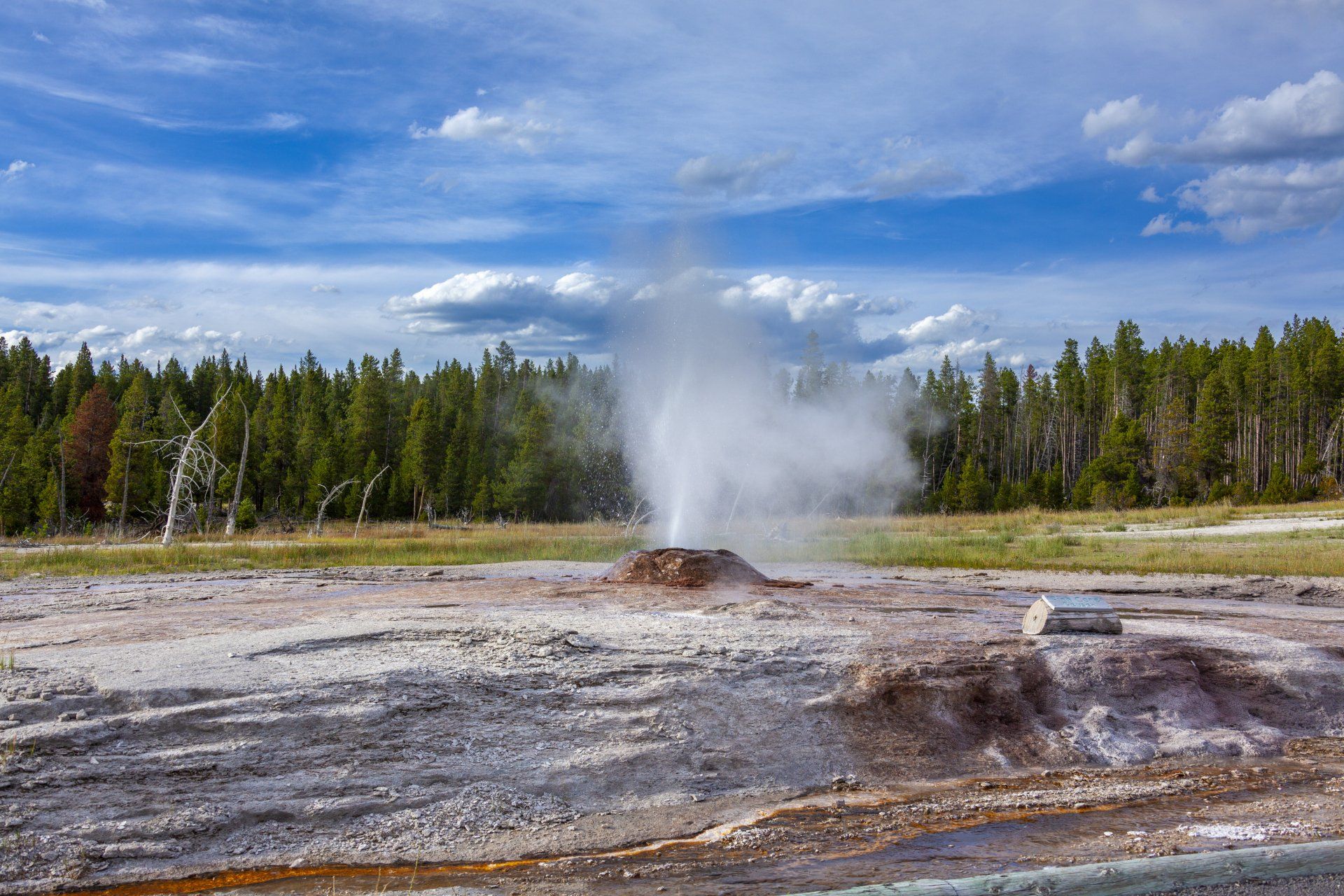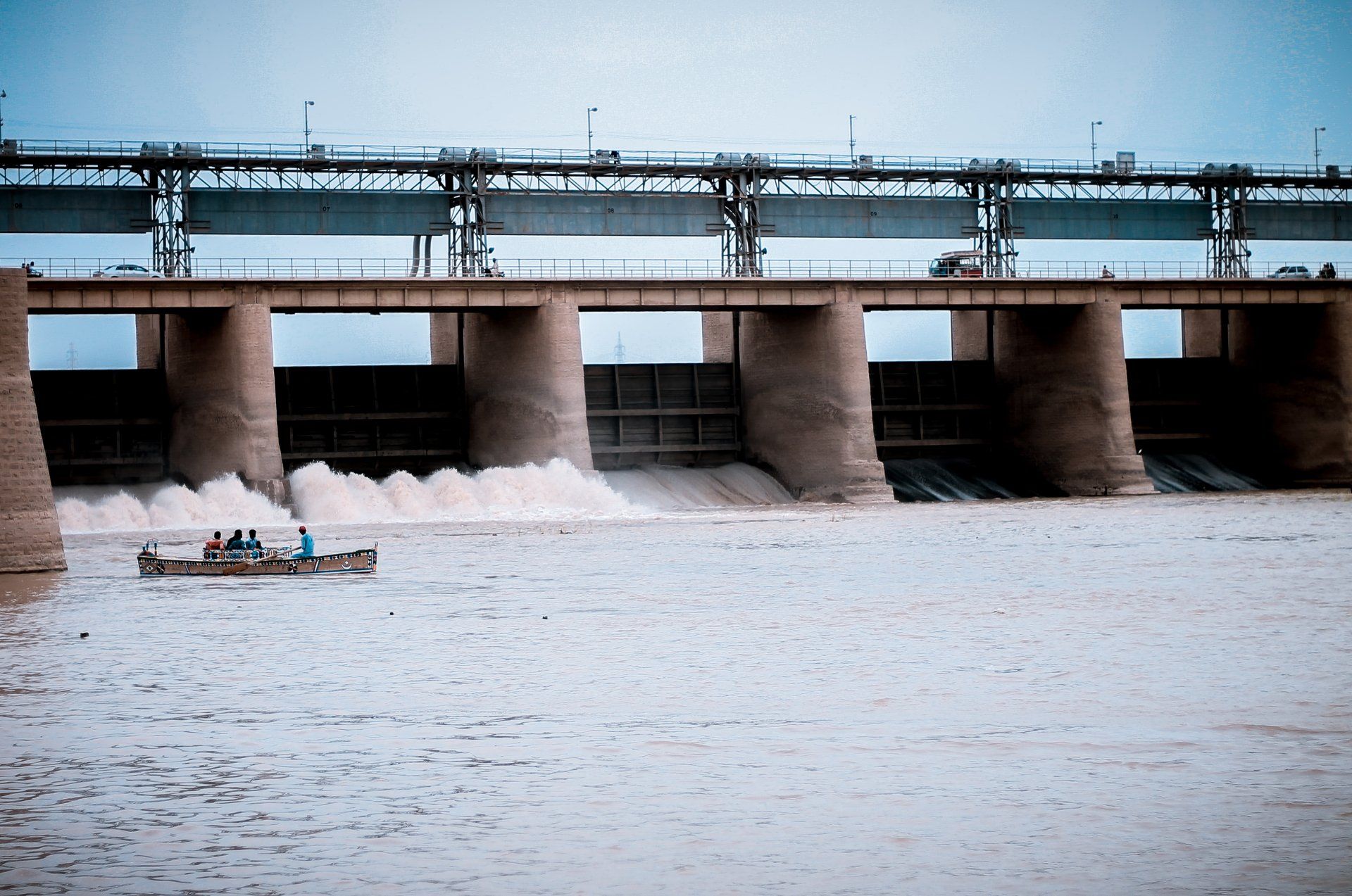Geology
C O U R S E S
Quick Links
Seismic interpretation requires understanding of structural
development and its interrelation with the stratigraphic system. This course covers a variety of modern structural concepts and techniques, and their role in the interpretation of seismic data.
This course is designed for geologists, petrophysicists,
geophysicists, reservoir engineers, and exploration & production managers.
-
Course Objectives:
At the end of this course participants will be able to:
- Understand the role of tectonics and deformation in the formation of various types and orientations of geologic structures
- Understand the interaction of the structural system with the stratigraphic and sediment logic environment for better prediction of reservoir formation
- Integrate data from the large seismic scale to subseismic scale, including seismic anisotropy, to understand better the overall petroleum system
- Be aware of the common pitfalls of interpretation.
-
Course Content
- Strain concepts
- General seismic interpretation
- Fault plane mapping, including automated
- Velocity analysis and reprocessing
- Seismic attributes for structural analysis
- Faults
- Borehole seismology
- Growth analysis
- Fault seal analysis
- Balancing and restoration
-
Programme Schedule
Day 1
Strain Concepts
- Understanding the deformation environment
- Force, stress, and strain/deformation
- Strain ellipse concepts
- Exploration Example
- Rock mechanics
- Modes of failure
- General Seismic Interpretation
- General principles of seismic acquisition, processing, and interpretation
- Seismic versus well resolution
- 2D interpretation techniques and pitfalls
- 3D interpretation techniques and pitfalls
- Fault Plane Mapping, Including Automated
- Fault picking; horizon mapping; strata slicing; zero vs 1 90 degree phase; texture analysis
Day 2
Seismic Attributes for Structural Analysis
- Amplitude analysis
- Dominant attributes for structural interpretation
- Faults
- Fracturing and Faulting
- Slip vs 1 separation and their quantification
- Normal faults and associated tectonic/nontectonic environments
- Reverse faults and associated tectonic/nontectonic environments
- Strike-slip faults and associated tectonic/nontectonic environments
- Displacement analysis
- Subseismic fault prediction
- Fault restoration
Day 3
Folds
- General fold concepts
- Modes/styles of folding
- Folds and associated tectonic/nontectonic environments
- Closure mapping and quantification
- Fold restoration
- Fracture ID
- Seismic anisotropy analysis
- Fracture mapping
- Well data integration
Day 4
Borehole Seismology
- Overview of borehole seismic measurements and techniques
- Acoustic logs, well bore seismic (VSP, cross-well, seismic MED )
- Growth Analysis
- Overview of borehole seismic measurements and techniques
- Acoustic logs, well bore seismic (VSP, cross-well, seismic MED )
- Growth Analysis
- Understanding and quantifying syndeformational growth sedimentation
- Growth in extensional, compression and other structural regimes
Day 5
Fault Seal Analysis
- Understanding and quantifying aspects of fault seal
- Balancing and Restoration
- Balancing techniques, structural modeling, and restoration
This course is designed to develop the participant’s knowledge
of the various forms of geological data and establish methods to integrate this data and construct play fairway maps. These play maps, in addition to simple exploration statistics, are then used to develop exploration strategies. This is a ‘hands on’ team-based course using real data and examples.
This course is designed for geologists, geophysicists, or
engineers with limited experience in play map-based
hydrocarbon exploration.
-
Course Objectives:
At the end of this course participants will be able to
- Know what are petroleum systems and play fairways
- Understand the key elements of the petroleum system, reservoir, source, seal, trap and timing
- Identify key reservoir and source depositional environments using core logs and wireline log motifs
- Have knowledge of the hydrocarbon habitat, and the stages of exploration, exploration, appraisal and production
- Know how the geology and geophysics team determines where to look for hydrocarbons
- Organise well data and correlate wells
- Construct gross depositional environment (GDE) maps
- Make play maps from GDE maps
-
Course Content
- Petroleum systems/play fairways
- Common risk segment mapping
- Basic petroleum exploration
- Well data organisation
- Mapping
- Exploration statistics analysis
- Appraisal and development geology
-
Programme Schedule
Day 1
Petroleum Systems/Play Fairways
- Using regional geology to define basin type, source, and reservoir distribution
- Data preparation and organisation
- Defining stratigraphy relative to geological data
- Dry hole analysis
- Gross Depositional Environment (GDE) mapping
Day 2
Basic Petroleum Exploration
- Play systems
- Depositional systems
- Source rock distribution
- Reservoir quality
Day 3
Well Data Organization
- Well correlation
- Organise poorly presented and inconsistent data
- Confirmation formation tops
- Where is my play level?
Day 4
Mapping
- Construct GDE maps from organized well data
- From the GDE maps, risk and then play maps are produced
- Value
- Calculating block value and realising the value of a newly available ‘bid’ block
Day 5
Exploration Statistics Analysis
- Regional geology and region ranking theory
- Appraisal and Development Geology
- What happens after a commercially successful exploration well is drilled?
Geological structure is the study of the permanent deformation and rock failure created by the changes in stress through geologic time. It is by far the most important aspect of geology for engineers to understand. Tectonic processes are responsible for the many discontinuity planes (fractures, faults, joints) that permeate rock masses controlling their strength, stress-strain characteristics and the transmission and storage of fluids.
This course is designed for geologists and oil & gas professionals who need an enhanced understanding of structure. This includes geologists, petroleum engineers, and geophysicists involved in the development of oil and gas reservoirs.
-
Course Objectives:
At the end of this course participants will be able to
- Understand the significant aspects of structural geology
- Know the different stress regimes, deformation process, and micro- and meso-scale structures
-
Course Content
- Introduction to geo-mechanics
- Introduction to structural geology
- Stress, strain, and deformation
- Extensional tectonics
- Strike-slip tectonics
- Compressional tectonics
- Salt tectonics
- Fracture systems and their mechanics
- Cross section construction, balancing
-
Programme Schedule
Day 1
Structural Geology and Structural Analysis
- Approaching
- Structural geology and tectonics
- Structural data sets
- Remote sensing
- Seismic data
- DEM, GIS and google earth
- Numerical modeling
Day 2
Deformation
- Components and deformation
- Homogenous and heterogeneous
- Mathematical description of deformation
- One–dimensional of deformation
- Strain in two dimensions
- Three-dimensional strain
- Simple and subsimple shear
- Progressive deformation and flow meters
- Velocity field
- Steady-state deformation
- General three –dimensional deformation
Day 3
Strain in Rocks
- Why perform strain analysis?
- Strain in one dimension
- Strain in two dimensions
- Strain in three dimensions
- Stress
- Stress on a surface
- Stress at a point
- Stress component
- Stress tensor
- Deviatoric stress and mean stress
Day 4
Rheology
- Idealized conditions
- Elastic materials
- Plasticity and flow permanent deformation
- Combined models
- The role of temperature, water
- Fracture and Brittle Deformation
- Types of fractures
- Failure and fracture criteria
- Micro defects and failure
- Fracture termination and interaction
- Deformation bands and fractures in porous rocks
Day 5
Salt Tectonics
- Salt tectonics and halokinesis
- Salt prosperities and rheolgy
- Salt diaprism in the extensional regime
- Salt diaprism in the contrational regime
- Balancing and Restoration
- Basic concepts
- Restoration of geologic sections
- Restoration in three dimensions
This course is designed for participants to develop their skills in
understanding the geometry and petrophysical characteristics
of carbonate reservoirs. Depositional fabric, grain type
and size and subsequent diagenetic modifications are the
major controls on carbonate reservoir behaviour. The course
demonstrates the value of the reservoir model in volumetric
assessment and development of carbonate reservoirs. Extensive practical sessions can utilise your own data or Robertson CGG Company’s extensive non-exclusive data.
This course is designed for petroleum geologists, explorationists, petrophysicists, geophysicists, and engineers involved with exploration of carbonate plays and development of carbonate reservoirs.
-
Course Objectives:
At the end of this course participants will be able to
- Recognise and model controls on reservoir quality and pore systems, including diagenesis and fracturing.
- Understand and apply carbonate seismic stratigraphy and sequence stratigraphy.
- Interpret log responses
-
Course Content
- Carbonate reservoirs
- The reservoir model - depositional and diagenetic characteristics
- Carbonate diagenesis
- Carbonate sequence stratigraphy
- Log response in carbonate rocks
- Reservoir assessment
-
Programme Schedule
Day 1
Introduction to Carbonate Sedimentology
- Environmental factors controlling carbonates
- The carbonate factory and complexity of pore systems
- Regional variations in distribution
- Constituent Components of Carbonates
- Carbonate mineralogy
- Skeletal grains
- Non-skeletal grains
- Carbonate mud
- Environmental Analysis
- Classification of carbonates
- Ichnology and ecology
- Carbonate facies and depositional models
- Classification of Carbonate Platforms
- Platform models
- Shelf-ramp models
- Other platform models
- Genetic classification of platforms
Day 2
Depositional Environments
- Paleogeography and depositional evolution
- Aeolian and Lacustrine Facies
- Aeolian facies characteristics
- Economic importance
- Lacustrine facies characteristics
- Economic importance
- Barrier Shoals and Lagoons
- Shelf facies in core and thin-selection
- Shelf facies diagenesis
- Reservoir potential
Day 3
Reef Models and Play Types
- General characteristics and classification
- Processes controlling formation
- Reef diagenesis
- Reservoir potential
- Pelagic and Redeposited Carbonates
- Pelagic/planktonic sediments
- Redeposited sediments
- Diagenesis
- Reservoir potential
- Carbonates Through Time
- Changes through time
- Patterns of evolution through time
- Responses to sea level variation
- Diagenesis and Fracturing
- Carbonate mineralogy
- Porosity: creation, reduction, changes and trends
- Karstification and other mineral cements
Day 4
Karstic Plays
- Features of subaerial exposure, karst and caliche
- Recognition of surfaces using seismic and logs
- Sequence Stratigraphy – Basic Concepts
- Facies analysis and lithostratigraphy
- Chrono and biostratigraphy
- Seismic and sequence stratigraphy
- Carbonate and Evaporite Sequence Stratigraphy
- Principles of carbonate sequence stratigraphy
- Principles of evaporate/carbonate cycle sequence stratigraphy
Day 5
Carbonate Seismic Stratigraphy
- Principles of seismic stratigraphy
- Examples of carbonate sequences on seismic
- Integrating Well Data
- Rock data – cuttings and cores (sedimentology, analysis, and SCAL)
- Wireline logs
- Well testing and the roles of specialists
- Carbonate Reservoirs
- Variety of pore types and relation to permeability
- Fracture porosity
- Wettability and capillary pressure
The course will demonstrate how the appropriate use of
geological information can lead to better management
decisions and thus improve the value of oil & gas projects.
This course is designed as an introductory course for new hire
graduate geologists, geophysicists or engineers, with limited
experience of hydrocarbon exploration
-
Course Objectives:
At the end of this course participants will be able to
- Have a clear understanding of the terminology and jargon used by petroleum geologists
- Understnad the sources and reliability of various types of geological information
- Know what geological questions to ask in order to gain an understanding of the cost, and analyse risk critical elements, of a petroleum project
- Have the confidence to conduct a basic technical conversation with a petroleum geologist
- Have an idea of where to look to continue to increase their geological understanding
- Critically read press releases and simple geological reports
-
Course Content
- Basic rock forming processes
- Geological time and dating geological events
- Fundamentals of maps and sections
- Characteristics of petroleum accumulations
- Sedimentary depositional environments
- The process of petroleum exploration
- Geological information from wells
- Fundamentals of production geology
- Managing geological uncertainty
- Field development concepts
- Concepts of reserves
-
Programme Schedule
Day 1
Basic Rock Forming Processes
- Classification and origin of rocks
- Burial, lithification and diagenesis
- Geological Time & Dating Geological Events
- How rocks are dated (absolute and relative time)
- Importance of time in rock formation and deformation
- Significance of unconformities
- Lithostratigraphy and chronostratigraphy
- Understanding a stratigraphic column
Day 2
Fundamentals of Maps and Sections
- Concepts of strike and dip
- Isochores and isopachs
- Key characteristics of maps and sections
- Mapping structure and stratigraphy (exercise)
- Characteristics of Petroleum Accumulations
- Nature and origin of traps, sources, seals and reservoirs
- Structural and stratigraphic traps
- Petroleum systems
- Generating leads and prospects (exercise)
Day 3
Sedimentary Depositional Environments
- Types and origins of sedimentary rocks (clastics and carbonates)
- Major depositional environments and their importance to exploration
- Characteristics and distribution of source rocks, reservoirs and seals
- Facies mapping and palaeogeography
- The Process of Petroleum Exploration
- Basin, play and prospect analysis
- Remote sensing and the basics of seismology
- Generating and evaluating prospects
- Depth converting seismic sections (exercise)
Day 4
Geological Information from Wells
- Brief overview of drilling and well completion procedures
- Drilling procedures
- Sources and reliability of well data (mud logging, well logging, testing)
- Coring and core analysis
- Working with well logs
- Simple well log analysis (exercise)
- Fundamentals of Production Geology
- Role of the production geologist
- Sources and reliability of information
- Reservoir geology and approaches to reservoir modeling
Day 5
Managing Geological Uncertainty
- Prospect risking and ranking
- Deterministic versus probabilistic approaches to volumetrics
- Field Development Concepts
- Key features of producing reservoirs
- Reducing uncertainty through appraisal drilling
- Concepts of Reserves
- Sourcing and quantifying uncertainty
- Definitions of reserves
- Approaches to reserves estimation
The course will look at what information is gathered during
drilling from wellsite geology, mud logging and petrophysical
logs, and how it is used. At the end of this course, participants
are expected to have an understanding of how petroleum
is formed, how it migrates and how it is trapped, and of the
principles of rotary drilling and the mud circulation system.
This course is designed for exploration, development, well site
and operations geologists.
-
Course Objectives:
At the end of this course participants will be able to
- Know the information that is obtained during the drilling of a well, its purpose and limitations
- Know how that information is used to monitor well progress, make decisions during drilling, and mitigate risks, thereby maximizing company’s return on its investment
- Understand how formation pressure is generated, how it can be predicted, and what can go wrong if it is not properly understood and managed
-
Course Content
- Wellsite geology
- Mud logging
- Petrophysical logs
- Cased hole logging
- Pressure detection
- Coring
- Well testing
- Deep and ultra deep water wells
-
Programme Schedule
Day 1
Introduction
- Classes of wells in the petroleum value chain
- Historical context
- The stimulus to drilling in challenging environments
- Wellsite Geology
- Well prognoses
- Functions of the wellsite geologist
- The information flow, decision making
- Mud Logging
- Traditional mud logging: drilling parameters, oil & gas shows, detection of H2S and CO2, pressure detections, lithological description, and sample collections
- Advanced Mud Logging, AML: “Archie’s Dream” and new technologies
- Modern ultra-deviated well technologies, and bio-steering and geo-steering in modern high-angle wells
Day 2
Petrophysical Logs
- The logging environment – flushing and invasion
- Open hole logs: GR, caliper, resistivity and SP, acoustic, neutron and density logs, their operation and response to different lithologies and fluids
- Cased-hole logging
- MWD and LWD, the developments and the latest technologies, and integration of the mud-log with MWD and LWD
- Log analysis of complex lithologies, such as limestone-dolomite mixtures and shale sands
Day 3
Pressure Detection
- Definition of terms and units – formation pressure, abnormal pressure, geopressured, fracturing gradients
- Origins of formation pressure, including overpressure and underpressure
- Pressure prediction ahead of drilling
- Pressure detection and measurement during drilling
Day 4
Coring
- Why we cut cores, core types and core analytical programmes
- Coring methods, including preservation techniques – waxing and freezing
- Well Testing
- Why we test the well and the information we expect to gather
- Wire-line testing, open hole drill stem testing, cased-hole testing
Day 5
Deep and Ultra-Deep Water Wells
- Definitions of deep and ultra-deep water and wells
- Sixth generation of MODUs (Mobile Offshore Drilling Units): construction, characteristics, how they are crewed, and their operation
- The hazards in drilling today’s ultra-deep water wells and ultra- deep wells (HPHT) and how to evaluate, mitigate, and control them
- Constructing the well and formation evaluation plan for the new era
This course is designed with the intention of demonstarting
the degree of integration necessary in developing an offshore
petroleum discovery, from field appraisal to development. The
course gives a comprehensive account of the methodology,
processes and techniques utilized in developing an offshore oil
or gas discovery.
This course is designed for project managers, field development and planning engineers, asset managers, petroleum engineers, reservoir engineers, as well as field geoscientists and managers who have an interest in or are involved in field development feasibility and planning.
-
Course Objectives:
At the end of this course participants will be able to
- Have a comprehensive understanding of key aspects of offshore field development, from appraisal through to development planning, and leading up to sanction.
- Understand the three key elements: reservoirs, wells, and facilities; and the integration of these elements with commercial aspects, and the required management aspects, including uncertainty and risk
-
Course Content
- Reservoir properties, characterization and behavior
- Well options, design and selection
- Facilities concepts
- Integrated field development planning
- Gasfield and deepwater development
-
Programme Schedule
Day 1
Reservoir Properties, Characterization and Behavior
- Introduction to development planning
- Field appraisal
- Reservoir performance and recovery factors
- Field appraisal
Day 2
Well Options, Design and Selection
- Horizontal and multilateral wells
- Artificial lift
- Well performance analysis
Day 3
Facilities Concepts
- Overview and basis of design
- Fixed structures
- Subsea options
Day 4
Integrated Field Development Planning
- Project feasibility and management
- Resources and reserves estimation and management
- Project economic evaluation
- Risk management
Day 5
Gasfield and Deepwater Development
- Gasfield development
- Introduction and how to monetise gas
- Gas well performance
- Gas reservoir performance
- Facilities considerations
- Production profiles and contracts
- Deepwater Development
- Location and geology
- Challenges
- Facilities Overview
This course is designed to introduce participants to the
concepts of sequence stratigraphy. It ranges from a review of
the development of this discipline, to the principles behind
the theory, examples of its application to the prediction of
lithofacies and stratal architecture.
This course is designed for explorationists, geologists,
stratigraphers and geophysicists who wish to extend
their knowledge through integration of seismic sequence
stratigraphy, with well log sequence stratigraphy and the
application of biostratigraphy to sequence stratigraphy.
-
Course Objectives:
At the end of this course participants will be able to
- Understand sequence stratigraphic concepts and controls
- dentify systems tracts and stratigraphic sequences from depositional facies, well logs and seismic facies
- Construct a sequence stratigraphic model by integrating lithological, biostratigraphical, seismic and well data.
-
Course Content
- Introduction to sequence stratigraphy
- Principles of stratigraphic analysis
- Seismic geometries
- The sequence stratigraphic model
- Sequence formation
- Depositional architecture
- Seismic stratigraphy and well log interpretation
- Sedimentary processes
- Depositional environment
- Sequence stratigraphy and sea level change
- Clastic sedimentology and sequence stratigraphy
- Carbonate sedimentology and sequence stratigraphy
-
Programme Schedule
Day 1
Methods for Analysis of Sedimentary Basins
- Well log sequence stratigraphy
- Systems tract and sequence identification in well logs
- Integration of well and paleontological data
- Biostratigraphy and implications for sequence stratigraphy
- Lithostratigraphic and biostratigraphic expression of sequences and systems tracts
Day 2
Controls on Deposition in the Sedimentary Rock Record
- The building blocks of sequence stratigraphy
- Orders of cyclicity
- Parasequences and cycles
- Stacking patterns
- Systems tracts and important surfaces
Day 3
Seismic Stratigraphy
- Methodology
- Seismic facies
Day 4
Sequence Stratigraphy in Siliciclastic Depositional Systems
- Fluvial
- Paralic (shelfal)
- Deep marine
Day 5
Sequence Stratigraphy of Carbonate Systems
- Concepts and controls
- Systems tracts and geometry
- Sequence stratigraphy of evaporitic systems
- Sequence stratigraphy and petroleum exploration
This course will provide a comprehensive and clear
understanding of the technical and commercial operation of the oil & gas industry. The course will look at the industry principles, such as: exploration & production, geology, transportation, storage, prices, and legal and commercial systems.
This course is designed for new executives to the industry,
commercial managers, various engineering disciplines, HR
managers, marketing, sales, and legal & commercial managers
-
Course Objectives:
At the end of this course participants will be able to
- Understand the oil & gas chain, and learn how industry and departments work and integrate together in the company
- Learn new terminology in the oil and gas industry, and improve communication between departments in the company
- Understand the current technical, commercial and operation issues
- Be familiar with all engineering and development aspects of the industry
- Be familiar with various geological and geophysical exploration methods
- Be able to explain the principal objectives and some key challenges in petroleum industry
-
Course Content
- Oil & gas industry overview
- Oil & gas geology
- Exploration phase
- Drilling operations
- Conventional and unconventional oil and gas recourses
- Formation evaluation
- Well completion
- Oil & gas production facilities
- Reservoir management
- Pipeline and other transportation modes
- Gas storage facilities
- Fundamentals of LNG production and transportation
- Crude oil refinery production and processes
- Commercial & legal issues
- Oil & gas prices’ volatility
- Oil & gas trading and transportation
- Roles of NOC, IOC, I-NOC
-
Programme Schedule
Day 1
Overview of the Oil & Gas Industry
- The main value creation steps: from exploration to end-user products
- Upstream, midstream, and downstream sectors
- Geographical distribution of resources
- Main consumption markets
- Industry and market participants
- Important industry trends
Day 2 and 3
Upstream Sector
- Origins of oil & gas
- Physical and chemical quality characteristics of oil & gas
- Conventional and unconventional oil & gas resources
- Obtaining commercial access to resources
- Creating value by locating oil & gas reservoirs
- Creating value by turning resources into bookable reserves
- Basics of oil & gas production
- Enhancing the value of mature resources
- Arrangements for the sharing of risk, investment, and rewards
- Roles of national oil companies and independent oil companies
Day 4
Midstream Sector
- Marine transportation of oil
- Pipeline and other oil transportation methods
- Oil storage logistics
- Creating value by getting gas to market
- Fundamentals of LNG production and transportation
- Gas pipeline operations
- Gas storage facilities
- Creating value through the use of transportation and storage
- Wholesale trading of crude oil, LNG, and natural gas
Day 5
Downstream Sector
- Refining processes and the main petroleum products
- Economics of refinery operations
- Blending and storage of refined products
- Biofuels and additives
- Regulation of end-user markets
- Retail and wholesale marketing for transport fuels
- Retail and wholesale marketing of natural gas
- Lubricants, asphalt, and other specialty oil products
- Overview of petrochemical markets
- Trading of refined products
This course will cover the road map (workflow) used in data
preparation and data analysis to build a coherent 3D static
model of the reservoir; how geological, petrophysical, seismic,
rock properties (SCAL) and dynamic data are integrated in a
consistent manner using judicious techniques.
This course is designed for geologists, geophysicists or
engineers with 5-7 years of experience. It assumes some basic
geoscience and engineering knowledge, but no prior hands-on experience on 3D modelling techniques used to interpret the datasets presented in this course.
-
Course Objectives:
At the end of this course participants will be able to
- Understand the integration between static and dynamic data in a coherent and consistent manner
- Use geological and petrophysical information to understand the depositional environments and the diagenetic processes that affect the rock fabric
- Characterise the reservoir rock types using mercury injection capillary pressure (MICP) and SCAL data
- Build a geological framework with a zonation scheme that honours the flow units 1 Understand how to integrate seismic and faults in the reservoir framework
- Use deterministic and stochastic algorithms to propagate petrophysical properties in three-dimensions and generate equi-probable realisations
- Build a saturation model honouring capillary pressures by reservoir rock types and fluid contacts
- Learn the process of ranking realisations and perform averaging and upscaling of properties
- Perform volumetric calculations and quantify the uncertainties 1 Produce P90, P50 and P10 models ready for flow simulation studies
-
Course Content
- Geoscience aspects
- Petrophysical & seismic aspects
- Rock fabric
- Lab data
- Rock-fluid interaction, flow units, geostatistics
-
Programme Schedule
Day 1
Geoscience Aspects
- Review of sedimentology
- Diagenesis
- Pore systems
- Sequence stratigraphy
- Petrophysical & Seismic Aspects
- Petrophysical review
- Seismic inputs required to reservoir description
Day 2
Rock Fabric
- Review of carbonate textures
- Pore systems
- Pore throat sizes in line with diagenetic processes
- Lab Data
- Detailed explanation of MICP and its use in rock fabric characterization
- Review SCAL, NMR, R35 to qualify the different rock fabrics
Day 3
Rock-Fluid Interaction
- Review wettability, Kr curves, OWC-FWL differences
- Sensitivity analysis on saturation-height modelling
- Flow Units
- Review zonation
- Layering
- Flow unit concepts
- k/phi
- FZI
- Lorenz Plots and the use of flowmeters for validation
- Introduction to the concept of fracture corridors and fracture modelling
Day 4
Geostatistics
- Univariate and bivariate statistics
- PDFs
- CDFs
- Cv and spatial statistics
- Evaluate variogram models (Spherical, Exponential, Gaussian) and the effect of their parameters (range and nugget) on model results
Day 5
3D modeling
- Comparison of estimation and simulation approaches handling discrete
- Continuous data
- Inverse distance
- Kriging
- Collocated co-kriging, Gs, SIS and co-simulation techniques
Choose a subject area
Ready to see the impact that UniHouse can have on your organisation?
Contact Us
We will get back to you as soon as possible.
Please try again later.
Useful links
Contact info
London, United Kingdom
Imperial College,
Innovation Hub,
4th Floor,
84 Wood Lane, London,
W12 0BZ
Join our newsletter
We will get back to you as soon as possible
Please try again later
The name "UniHouse®" is protected by UK Trademark Registration No. UK00003667826, held by Unihouse Global Ltd. This trademark is registered with the Intellectual Property Office in the United Kingdom. Any unauthorized use is strictly prohibited









